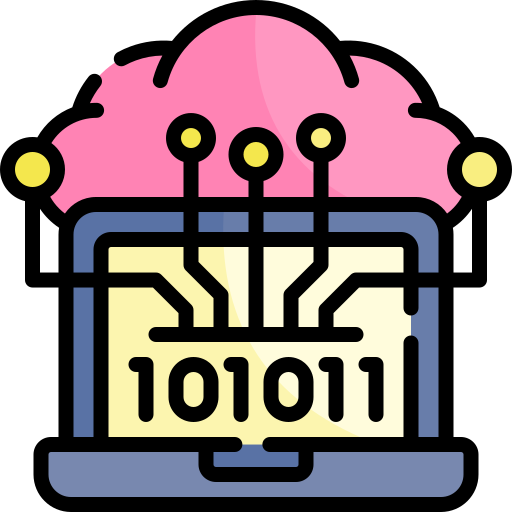The financial industry grows more revolutionary through Decentralized Finance (DeFi) because it cuts out traditional financial entities including banks and brokers and traditional financial institutions. Through blockchain technology and smart contracts DeFi provides a decentralized financial solution that enables peer-to-peer financial operations which anyone can access through the internet. This transformative technology modifies global money borrowing and lending operations and trading and investment spheres.
This guide examines DeFi’s ascent while explaining its operational principles together with its advantages and disadvantages and demonstrates its effect on the financial landscape of the future.
The Growth of DeFi
DeFi protocols now host more than billions of dollars across their platforms because of a rapid growth phase that began several years ago. DeFi’s expansion was made possible through the expanding use of blockchain technology together with the rise of cryptocurrencies and the need for financial accessibility. Decentralized finance users find alternative financial solutions by using major platforms like Uniswap, Aave, MakerDAO and Compound.
How DeFi Works
DeFi applications (DApps) run on blockchain networks that primarily use Ethereum while being powered by smart contracts which are self-implementing protocols that contain pre-established blockchain-based rules. The DeFi ecosystem operates through several important elements which include the following:
1. Decentralized Exchanges (DEXs)
The crypto-trading exchange Uniswap along with SushiSwap and PancakeSwap permit users to conduct cryptocurrency swaps autonomously from any third-party authority.
Business automation through Automated market makers (AMMs creates liquidity pools in place of traditional order books.
2. Lending and Borrowing Platforms
Aave, Compound, and MakerDAO together with other platforms offer users the option to generate interest while lending cryptocurrency assets or become borrowers through mechanisms that require asset-based collateral.
Delegated contracts both clear up data transparency while also cutting down the necessity of credit evaluations.
3. Stablecoins
The DeFi ecosystem allows users to perform transactions with stable crypto assets which are linked to dollar values through examples like USDC, DAI and USDT.
4. Yield Farming & Staking
The DeFi space lets users offer their assets to protocols to receive payment based on native token distributions.
The process of yield farming requires users to optimize their asset movements across various platforms for maximizing returns.
5. Derivatives & Synthetic Assets
Users on Synthetix can establish synthetic assets to represent actual financial assets including stocks and commodities and fiat currencies.
6. Insurance & Risk Management
DeFi insurance platforms such as Nexus Mutual enable users to obtain coverage protection against both smart contract failures and hacking events through their mutual insurance services.
Benefits of DeFi
Through DeFi users gain access to financial services which specifically benefits residents who do not have established banking relationships.
- The blockchain records all smart contracts along with transactions in a public manner to display transparency while fighting fraud.
- Because DeFi cuts out middle parties it lowers the expenses involved in regular financial dealings.
- Users possess the ability to govern their funds independently since they do not need banking institutions to manage their money.
- Crypto banking services accessible through DeFi provide unrestricted financial support to users who want transnational operations.
Risks and Challenges of DeFi
Software bugs within smart contracts produce vulnerabilities which attackers exploit to conduct financial thefts.
- The future growth of DeFi remains unclear because governments and regulatory bodies need to establish policies to govern this sector successfully.
- The unpredictable market shifts of cryptocurrency cause collateralized loans and liquidity pools to face uncertainties because of high price volatility.
- Because DeFi operates as an open network criminals take advantage of its nature to launch deceptive activities targeting users with fraudulent projects.
- DeFi users must pay a high price when they make mistakes because transactions within the system are permanently executed without possibility of return.
The Future of DeFi
Blockchain development shows promise to expand DeFi as well as establish connections between decentralized finance and conventional banking sectors according to the following projections:
- The implementation of improved smart contract security measures will enhance audit capabilities while protecting against security risks.
- Government authorities will establish new standards that ensure DeFi operates in a secure manner.
- Several operating system upgrades including Layer 2 solutions and blockchain expansion networks will create quicker transactions with lower dependency on fees.
- Traditional financial companies will add DeFi solutions to their services for business improvement.
Conclusion
Disruptive DeFi technology now reshapes the financial system through its open and borderless systems that provide traditional banking alternatives. Users who participate in DeFi systems must be aware of the risks along with benefiting from reduced expenses and self-management and unrestricted accessibility across borders. The ongoing development of the DeFi ecosystem today shows promise to reshape finance through a system that provides better accessibility and efficiency for global users.
People who learn how to use decentralized finance responsibly will discover fresh financial avenues leading towards decentralization of finance.










